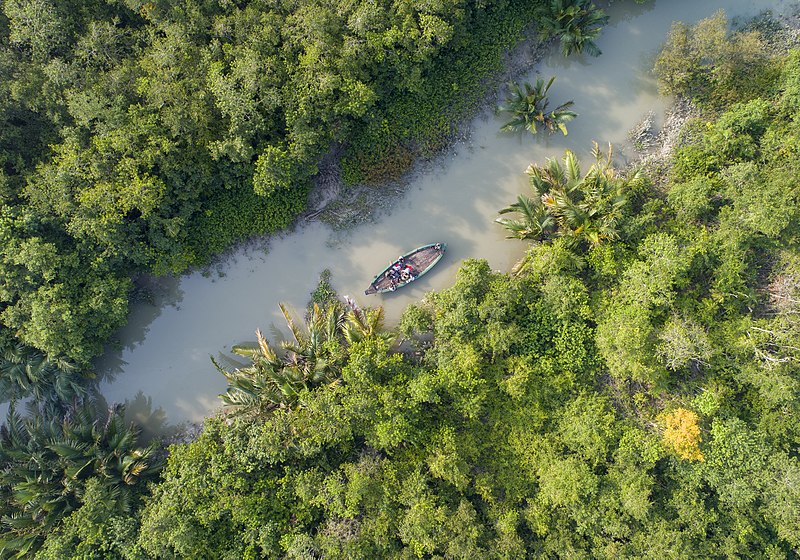Rivers in Sundarban

The Sundarban is actually a massive delta formed by a tangled web of rivers, canals, and other waterways.
The Rivers in Sundarban is primarily fed by the Ganges and the Brahmaputra rivers. At their meeting point, these two rivers form a delta known as the Sundarban, which ultimately flows into the Bay of Bengal.
Gosaba, situated 13 feet above sea level, holds the title of being the largest and the final inhabited island of Sundarbans in India. This particular island serves as the gateway to the dense forest reserve. Despite its detachment from the mainland, Gosaba boasts its own panchayat, schools, hospitals, and local self-governance among others.
Tidal features of Sundarban Rivers
Sundarban features an extraordinary tidal phenomenon that occurs twice daily, characterized by high tides that elevate the water level by roughly 6-10 feet, and low tides that expose expansive mudflats.
Tides and currents are continually reshaping the Sundarban delta’s many islands, mudflats, and mangrove forests. The unique environment that sustains such a diverse array of flora and animals in the delta region is maintained in part by the regular flooding that occurs there.
Widow village in Sundarban
Notably, the region is infamous for man-eating tigers that have reportedly attacked numerous families in one of its villages – the Widow Village. This particular village is also home to India’s persistent Tiger Widows. For this reason, fishermen require special authorization from the reserve forest office department before fishing in the core zone forests. However, one need not fear as it is safe to visit Sundarban.
An unmissable spectacle in Sundarbans is the sighting of Phytoplanktons – tiny microorganisms that emit light during a dark new moon. To witness this phenomenon, one must embark on a night safari.
It’s possible to check it out on a Sundarban Travel
Besides these two major rivers, the Sundarban also sees the flow of other smaller rivers and canals, including the Matla, Bidyadhari, and Hogol. The waterways crisscross the forest like a complicated web, with rivers and channels all linked together.
In addition to transportation and recreation, local fishermen and other populations rely on the waterways as a means of subsistence.